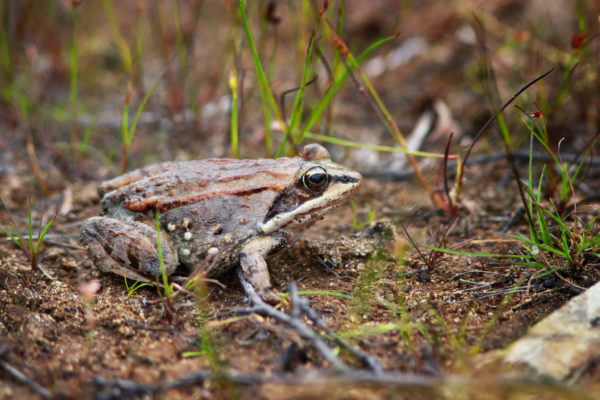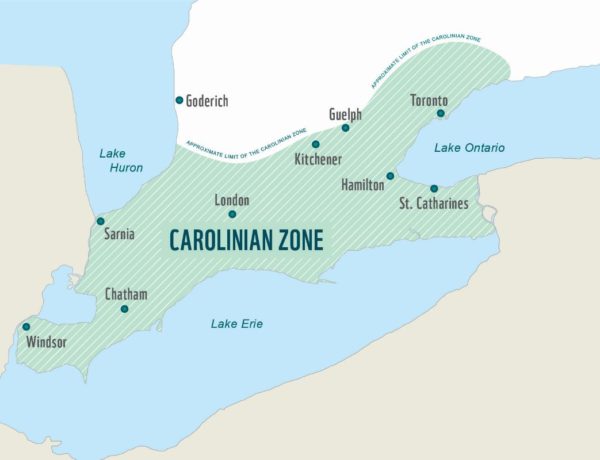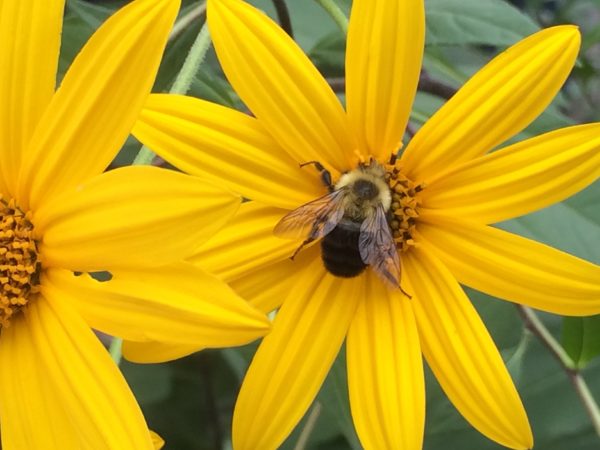Help wildlife thrive, one garden at a time. Here’s how
Written by: David Miller, president and CEO, WWF-Canada & Michelle Kanter, executive director, Carolinian Canada
Have you ever wondered what your property looked like hundreds of years ago?
If you live in the Carolinian Zone – a biodiverse ecoregion nestled between the Great Lakes, stretching from Toronto to Windsor – it’s possible that your little piece of Canada was once part of an old growth forest or wetland home for wildlife. Southern flying squirrels glided through mature hardwood forests, monarchs thrived in meadows of abundant milkweed and wood frogs made the journey from their tadpole pools to their new homes in wooded ravines.
Today, mature hardwood forests aren’t as abundant. The green corridors adjoining the wood frog’s wet and wooded habitats are fragmented. And the milkweed plants that sustain monarch caterpillars are waning as habitat is replaced by non-native plants or sprayed with pesticides.
You can help restore the Carolinian Zone to its natural state and protect the region’s incredible diversity of wildlife by gradually transforming your green spaces into garden habitats with In the Zone, a wildlife gardening program by WWF-Canada and Carolinian Canada.

At-risk wildlife under pressure
Flecked with gold and sporting a brown mask over a variety of brown hues, the handsome wood frog is one of the first singers each spring, even before most birds, and is known for its distinctive chuckle. The wood frog should be common everywhere in the region, but in some parts of its range, where habitat has been lost or degraded, it can no longer be found.
It’s one of countless wildlife species that are slowly disappearing from the Carolinian Zone, unnoticed as habitat is lost or broken into smaller and smaller islands of green.
Although it is less than 0.3 per cent of Canada’s land mass, the Carolinian Zone is home to one-quarter of Canada’s human population and one-third of Canada’s at-risk plants and animals, including the Jefferson salamander, Blanding’s turtle, cerulean warbler and rusty patch bumblebee.

The pressures continue to mount as climate change, intensifying human development, expanding urban boundaries and competition from non-native species push native wildlife out.
How your garden can help wildlife recover
The good news is that we can reverse the trend by connecting the green habitat dots, starting with our own little pieces of nature: gardens, yards and other green spaces — even balconies.
Native wildlife co-evolved with our native plants. By planting a single native oak, a patch of milkweed or adding a water feature, you’ll be taking the first step to creating an ecosystem in your green space that offers food and shelter to a diversity of bees, caterpillars, butterflies and birds, while the imported varieties we normally plant often have little habitat value for wildlife.

In the Carolinian Zone, where 95 per cent of land is privately owned, your green space is critical to restoring and protecting biodiversity.
When native plants are added to your property and connected to other green spaces and natural habitats, you can also help restore the paths taken by migratory wildlife and those that move between habitat types throughout their life cycle, contributing to healthier, less fragmented Carolinian ecosystems.
Using the In the Zone Tracker, gardeners can measure the progress we’re making together to restore lost habitats in this fragile ecoregion.
This summer, get growing. Then pull up a chair to watch as different birds frequent your trees, chipmunks visit your yard, bees sip nectar from wildflowers and a variety of wildlife stops by for a drink after it rains. Do you see it now? Your property is part of a complex ecosystem that helps wildlife thrive.
A collaboration between WWF-Canada and Carolinian Canada, In the Zone provides gardeners with the tools to gradually transform green spaces into woodland, water and wildflower gardens for native wildlife.


